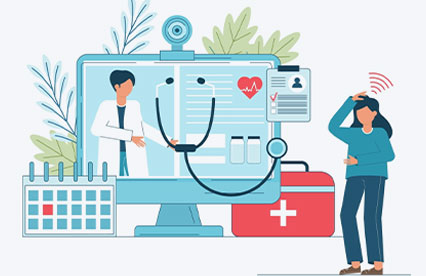Correctly diagnosing the cause of respiratory distress can be difficult, and adding waveform capnography to the medical history and physical exam findings can help in making treatment decisions.
In capnography applications , the capnography waveform represents the movement of air in the lungs, similar to the complexes on an electrocardiogram representing electrical conduction through the heart. The waveform begins at the onset of expiration and senses air from the dead space in the upper airway and bronchi. CO2 is usually not present in the dead zone and the graph should be at the baseline. A sharp spike is typically seen when exhaled air from the alveoli reaches the sensor, and a plateau occurs when all of the detected exhaled air comes from the alveoli. Then see a sharp downward spike during inhalation. The height of the waveform depends on the amount of carbon dioxide detected, and the length of the waveform depends on the time of expiration.
In the case of bronchospasm, air is trapped in the alveoli and is not released uniformly. This creates a curve in the initial spikes and plateaus or "shark fin" appearance. The more severe the bronchoconstriction, the more obvious the waveform curve. If the waveform is upright and "clear", there is no bronchospasm and the respiratory distress must be caused by something else.
Increased work of breathing due to pulmonary edema may lead to fatigue and respiratory failure. This will cause ETCO2 to rise, but the waveform will remain upright. Hyperventilation results in exhalation of excess carbon dioxide, which presents with clear waveforms and low ETCO2 or hypocapnia. Causes of hyperventilation include diabetic ketoacidosis, pulmonary embolism, and anxiety.
Capnography uses have aeration and circulation components. Cells use oxygen and glucose to generate energy and release carbon dioxide into the blood for delivery to the lungs. The amount of carbon dioxide exhaled depends on the adequacy of circulation in the lungs, which provides clues to circulation in the rest of the body. Low ETCO2 and other signs of shock suggest poor systemic perfusion, which may be caused by hypovolemia, sepsis, or arrhythmias.
Cardiac arrest is the ultimate state of shock; there is no circulation or metabolism and no carbon dioxide production unless effective chest compressions are performed. Capnography uses can provide feedback on compression quality and when a compressor needs to be replaced. An ETCO2 of less than 10 mm Hg indicates that the compressions are not fast or deep enough. If cycling resumes, the peak in ETCO2 usually occurs before the pulse is detected. It is sometimes difficult to determine whether the patient has a pulse, but if ventilation produces a waveform without compressions, there must be a circulation.
